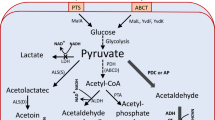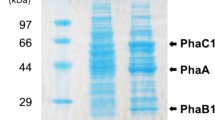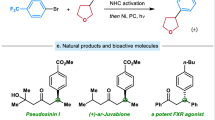Abstract
IN recent years, the biochemistry and enzymology of Fusaria have received considerable attention in this laboratory. These moulds are characterized by their ability to ferment hexoses and pentoses, bypassing the phosphoglyceric acid step. They are able to reduce nitrates via nitrite to hydroxylamine, to utilize potassium cyanide as a carbon and nitrogen source and elementary sulphur as a hydrogen acceptor, to synthesize a variety of pigments which can serve as mediators between oxidation and assimilation, and to convert carbohydrates abundantly into fats1.
This is a preview of subscription content, access via your institution
Access options
Subscribe to this journal
Receive 51 print issues and online access
$199.00 per year
only $3.90 per issue
Buy this article
- Purchase on SpringerLink
- Instant access to full article PDF
Prices may be subject to local taxes which are calculated during checkout
Similar content being viewed by others
References
Nord and Mull, Advances in Enzymology, 5, 165 (1945).
Hägglund, "Holzchemie", 352 (Acad. Verlagsges. Leipzig, 1939). "A Handbook of Empire Timbers" (revised ed., London: H.M. Stationery Office, 1945.)
Lyman and Langwell, J. Soc. Chem. Ind., 42, 279 T (1923).
Nietzki, Ber. deut. chem. Ges., 24, 3368 (1891).
Author information
Authors and Affiliations
Rights and permissions
About this article
Cite this article
NORD, F., SCIARINI, L., VITUCCI, J. et al. Alcoholic Fermentation of Carbohydrates and Dehydrogenation of Alcohols by Certain Wood-destroying Fungi. Nature 157, 335–336 (1946). https://doi.org/10.1038/157335c0
Issue date:
DOI: https://doi.org/10.1038/157335c0
This article is cited by
-
Enzyme Studies on the Mechanism of Wood Decay
Nature (1947)



